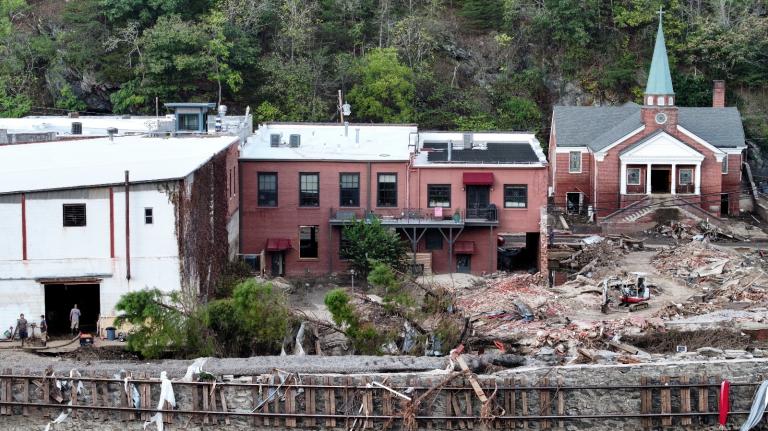The other day I wrote a post about one of the main reasons Germany is phasing out nuclear power: It has decided that baseload power is not compatible with a system based on renewable energy. Since then I’ve run into some interesting stuff that’s related, and in my new bloggy spirit, I’m just going to toss it out there.
First, I highly recommend Chris Nelder’s “Why baseload power is doomed,” which covers much of the same ground, but in somewhat more technical detail and more focused on the U.S. The most direct statement of the thesis comes in his summary of another report:
A 2010 study called “The Base Load Fallacy” [PDF] by Australian researcher Dr. Mark Diesendorf, an expert on integrating wind into power grids, fingers the “operational inflexibility of base-load power stations” as the main obstacle to further integration of renewables. “The renewable electricity system could be just as reliable as the dirty, fossil-fuelled system that it replaces,” he observes, if demand were more efficient and intelligent, and supply were made up of a wide variety of renewable sources plus a small amount of gas-fired capacity to cover the peaks. The perpetrators of the baseload fallacy, he argues, are mainly the industries who benefit from the status quo: coal, oil and gas companies, the nuclear industry, power generators, and industries who depend on them like aluminum and cement manufacturers.
As Nelder notes, countries like Germany, Denmark, and Spain are already defying confident predictions that modern grids can only accommodate a small percentage of renewables. And there’s every reason to think we can go higher:
Renewables should be able to meet at least 20 percent of electricity demand without disrupting the grid just about anywhere in the world with good grid planning and management. As geothermal and marine power technologies mature, they will become a much less intermittent, natural substitute for the baseload technologies of the past. A host of other technologies will even out the bumps in renewable generation by adding storage (batteries for distributed storage, and pumped hydro and solar thermal for utility scale); increasing the connections between grids (allowing better transmission between sunny and cloudy, or windy and still areas); and transitioning to on-demand natural gas-fired peaking generators. Over the next decade, the current assumptions about the need for traditional baseload capacity will begin to fade as new storage, interconnection, and smart grid management strategies come into play, and ultimately, a combination of these technologies might raise the limit on renewables to 100 percent. (my emphasis)
Woo!
As Nelder notes, “the market” is not going to do this magically. To get there, the insane patchwork of U.S. power system regulations must be reformed and U.S. utilities must shed their traditional aversion to innovation. We have to begin planning (gasp) for the system we want.
——
Speaking of storage, it’s a crucial piece of the puzzle for low-carbon power systems. Right now, Germany throws away about 20 percent of the wind energy it produces because it exceeds local demand and there’s insufficient transmission to carry it where it’s needed. Storage would help with that problem.
The other day I mentioned a process catching on in Germany whereby excess power is converted into synthetic natural gas. Technically, water is split into hydrogen and oxygen through electrolysis. Then the hydrogen is combined with carbon dioxide; it reacts to form methane, which is basically natural gas, produced synthetically.
About 40 percent of the power is lost in the process — worse than the most common large-scale option, pumped hydro, which only loses 30 percent. But it has distinct advantages. For one thing, methane can be stored in existing natural gas pipelines, which could conceivably hold enough to cover two full months of German power demand. (Total pumped hydro in Germany could only cover about an hour.) Synthetic natural gas can also be liquefied for use in vehicles.
Relatedly, Technology Review has a good piece on storing energy as hydrogen:
Siemens estimates that generating 85 percent of Germany’s electricity using renewables will require 30,000 gigawatt-hours of storage. The hydrogen needed to supply that much electricity could be stored in a quarter of the space available in underground [salt] caverns. The hydrogen could be distributed initially through existing natural gas pipelines, and eventually through dedicated pipelines.
I’ve been saying for years that storage is one of those areas I expect to move faster than anyone predicts. There are so many possibilities and so much demand.
TR notes that this kind of storage would not only benefit renewables, but nuclear too. And Jesse Jenkins speculates in a recent piece that cheap storage might even throw a lifeline to coal. Another way of saying this is: storage is not a magic bullet. If we want to avoid particular outcomes, or achieve particular outcomes, there’s no substitute for … planning.
——
And finally … ah, screw it, I think I’ll save the third thing for its own post. Yay blogging!




